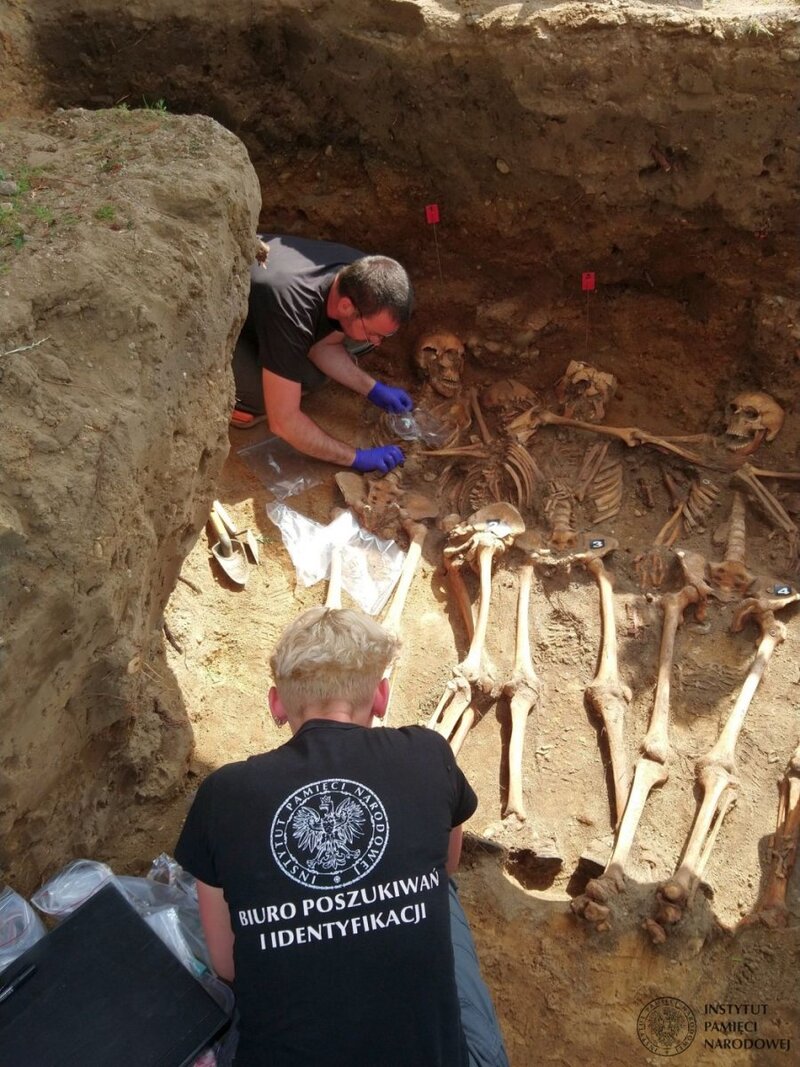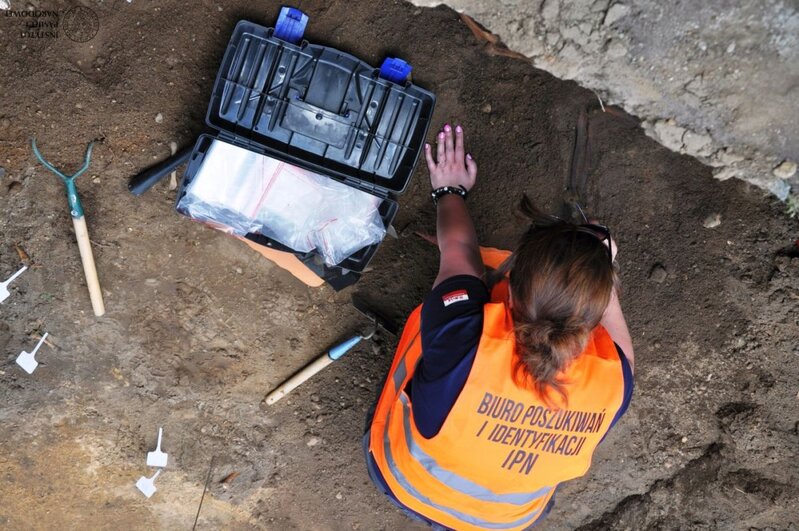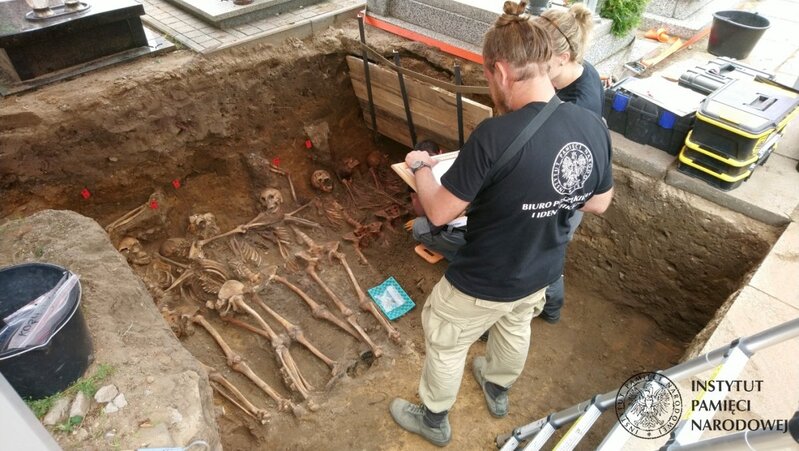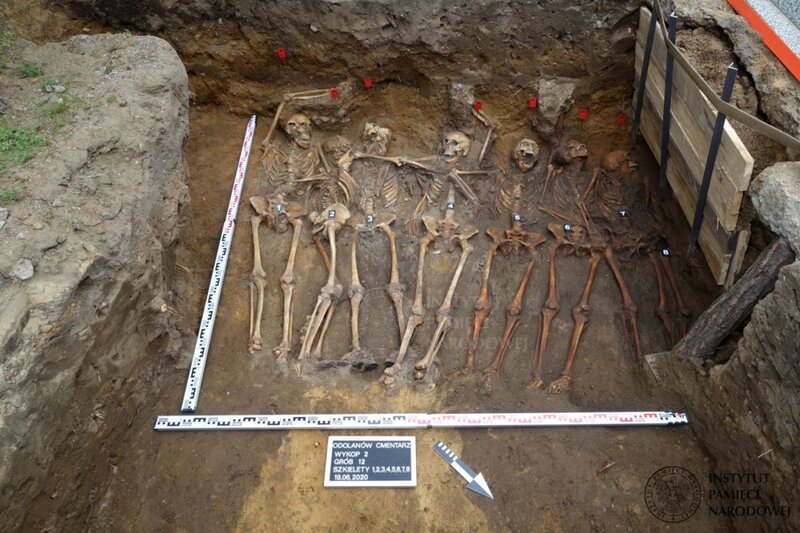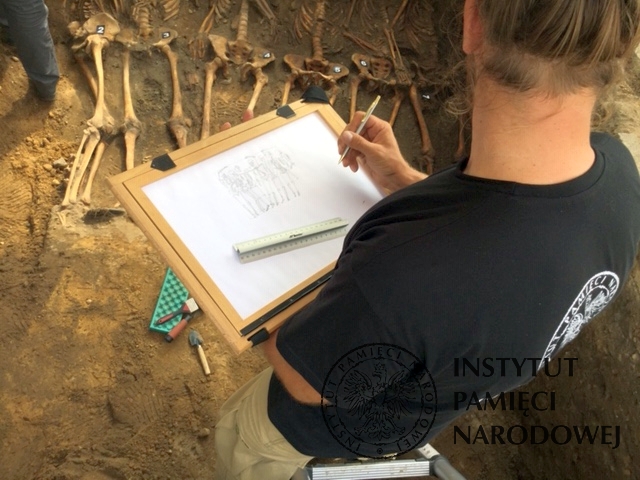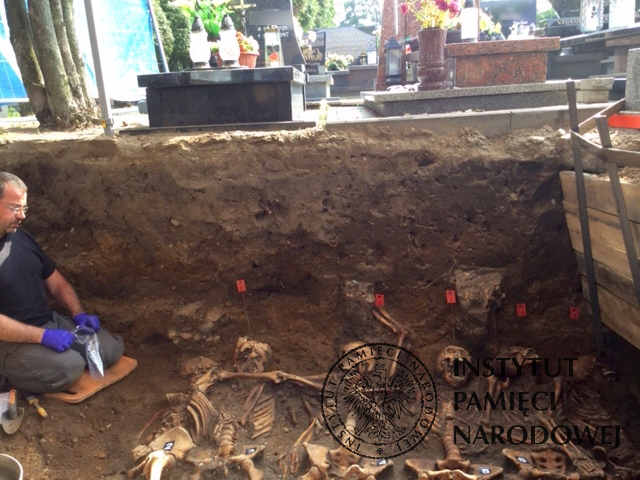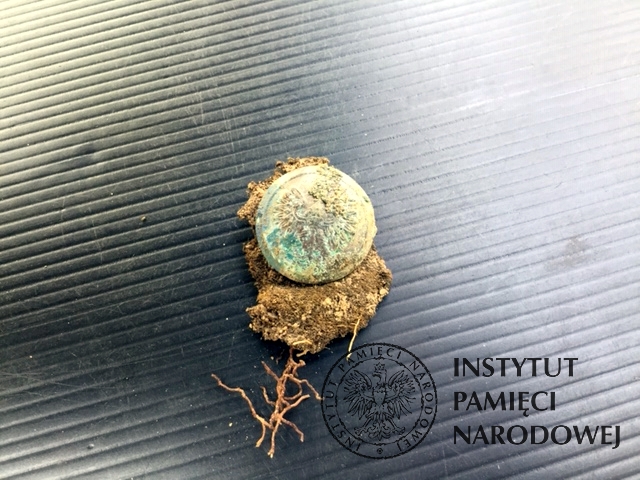They were a continuation of last year's search, which was aimed to find the burial place of soldiers from the unit of the "Warta" Military Independent Operational Group under the command of Lieutenant Jan Kempiński alias "Błysk", who were killed in the roundup on 22 October 1945.
On that day, the "Błysk" unit seized Odolanów. In the town, the Citizens’ Militia post was disarmed, the town hall was occupied, and the municipal funds were distributed among locals at a rally organized on the town’s square. During the retreat, near Odolanów, an hour-and-a –half long skirmish took place between the unit and the NKVD / Internal Security Corps / Security Service operational group following them, which had twice the numerical advantage. The "Błysk" ‘s unit was broken up. According to various sources, up to 24 partisans were killed. The wounded commander managed to escape. Some of the bodies of those killed were taken by their relatives and buried in family graves. According to accounts of many witnesses, the remaining corpses were secretly buried at the Odolanow cemetery by the communist security service.
In 2019, the work of the IPN’s Office of Search and Identification focused on the area along the cemetery fence, where according to the testimonies of nearby residents, the fallen soldiers had been buried. At that time, however, the remains were not found.
This year's work was carried out within the symbolic Grave of Greater Poland Insurgents and Pro-Independence Underground Soldiers. During the work, the remains of eight people were revealed. The arrangement of skeletons in the grave and biological features, as well as the nature of injuries, indicate that the soldiers were probably found. Numerous effects have been found on them, such as military buttons and other pieces of uniforms, a comb and shells from Mauser-type ammunition. The remains will be subjected to genetic testing.
